Last updated: April 5, 2024
Dive into the essence of Thoroughbred horses, where speed meets grace. Born from a lineage of Arabian, Barb, and Turkoman stallions, Thoroughbreds are not just the heart of horse racing; they embody versatility and spirit across equestrian disciplines.
This article unfolds their storied past, celebrates their athletic prowess, and looks at their evolving role in the equestrian world. For enthusiasts and newcomers alike, discover the enduring allure of Thoroughbreds, a breed that continues to captivate and inspire.

History and Origin of the Thoroughbred Breed
The Thoroughbred, a breed of horse developed in England for racing and jumping, stands out for its exceptional speed, agility, and spirited temperament. This breed’s origins trace back to 17th-century England, where a quest for the ultimate racehorse led to the crossbreeding of Arabian, Barb, and Turkoman stallions with native mares.
This strategic mix aimed to combine the Arabian’s speed with the strength and endurance of local breeds, creating the foundation of the Thoroughbred breed. Key to the Thoroughbred’s development were three foundation sires: the Byerley Turk, the Darley Arabian, and the Godolphin Arabian.
Their contributions were pivotal, as they introduced traits that have become hallmarks of the breed: speed, endurance, and a competitive spirit. The establishment of the General Stud Book in 1791 marked a significant milestone, ensuring that only horses with verified pedigrees could be registered.
This move solidified the Thoroughbred’s status and purity, setting the stage for its dominance in horse racing. Beyond racing, Thoroughbreds have significantly influenced other horse breeds, contributing their desirable traits to various equestrian disciplines worldwide.
As the breed evolved, Thoroughbreds became synonymous with horse racing, while also proving their versatility in show jumping, dressage, and eventing. Their impact on the equestrian world is profound, showcasing their adaptability and the enduring legacy of their foundation sires.
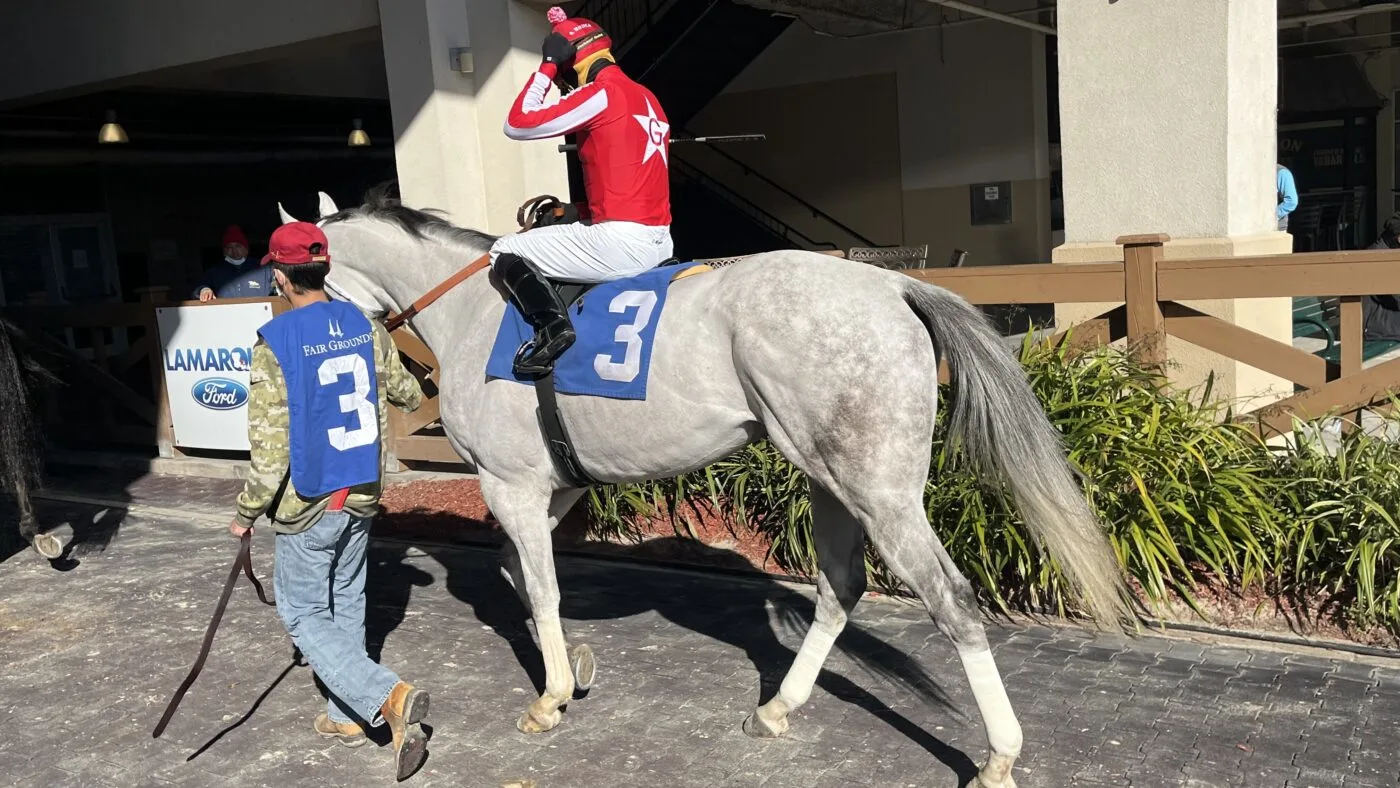
Physical Characteristics of the Thoroughbred
Thoroughbreds are distinguished by their athletic build, designed for speed and agility. Their physical traits reflect centuries of selective breeding for racing and competitive sports. Here’s an overview of their key characteristics:
- Height and Build: Thoroughbreds typically stand between 15.2 and 17 hands high, showcasing a lean and muscular physique. This build contributes to their remarkable speed and endurance on the racetrack.
- Head and Neck: They possess a refined head with a straight profile, alert ears, and intelligent eyes, complemented by a long, well-set neck. These features contribute to their aesthetic appeal and respiratory efficiency.
- Coat Colors: Thoroughbreds come in many colors, including bay, black, chestnut, gray, and roan. Their coats are sleek and fine, enhancing their elegant appearance.
- Legs and Feet: Characterized by long, slender legs with strong tendons and well-defined muscles, Thoroughbreds have small, hard hooves. This leg structure is key to their explosive speed and agility.
- Unique Features: A larger heart and greater lung capacity than many other breeds enhance their stamina and performance. Their spirited and bold nature is matched by a high level of intelligence and trainability.
Comparing Thoroughbreds to Other Breeds
When comparing Thoroughbreds to other horse breeds, focus on the specific traits that set them apart:
- Arabian Horses: While Arabians excel in endurance and have a distinctive appearance, Thoroughbreds surpass them in raw speed and are preferred for middle to long-distance racing.
- Quarter Horses: Known for their sprinting capabilities over short distances, Quarter Horses are more muscular, whereas Thoroughbreds excel in longer races due to their lean build and stamina.
- Warmbloods: In disciplines like show jumping and dressage, Warmbloods may be favored for their power and precision. However, Thoroughbreds are valued for their speed, agility, and the unique grace they bring to these sports.
These distinctive physical traits help define the Thoroughbred’s appearance and their exceptional athletic abilities, influencing their behavior and temperament.
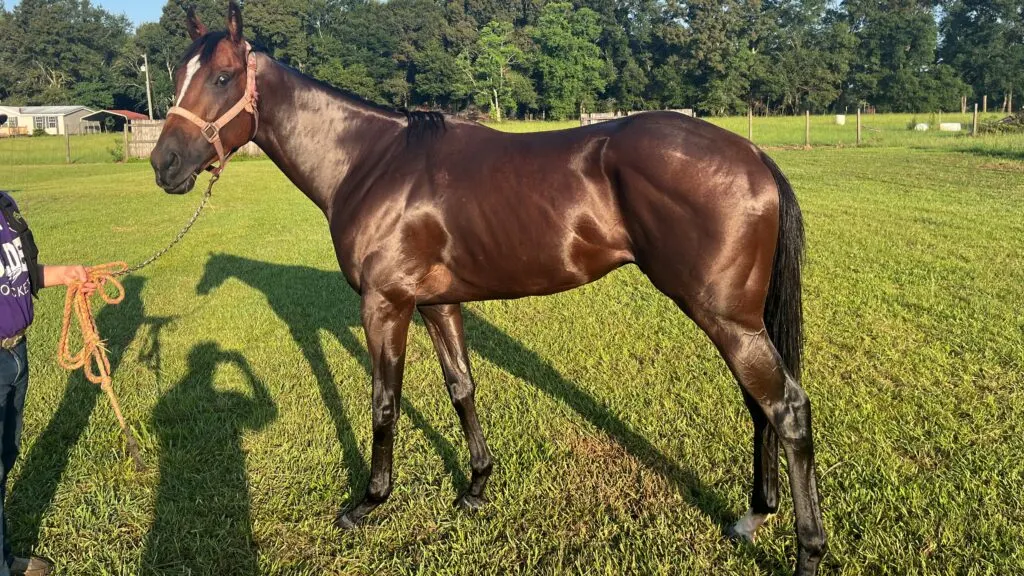
Thoroughbred Temperament: Beyond Myths and Challenges
I have found that Thoroughbreds possess a temperament that is complex and often misunderstood. Their sensitivity, intelligence, and spirited nature help to make them exceptional athletes and versatile companions across various equestrian disciplines.
I hope to shed light on the true nature of Thoroughbred temperament, debunk common misconceptions, and provide insights into effectively managing their spirited characteristics.
Debunking Common Misconceptions
Contrary to the belief that Thoroughbreds are solely bred for racing, their adaptability and intelligence make them suitable for many activities beyond the racetrack. While their energetic and spirited demeanor is often mistaken for being high-strung, with proper training and care, Thoroughbreds can be calm and responsive.
Navigating Challenges with Sensitivity and Spirit
The spirited nature of Thoroughbreds, often described as “hot-blooded,” presents unique challenges in training and daily care. Their sensitivity requires a nuanced approach—harsh or inconsistent handling can easily unsettle them, while a gentle, patient method fosters trust and cooperation.
Recognizing the individual personality of each Thoroughbred is crucial, as their temperament can significantly influence their training, performance, and well-being.
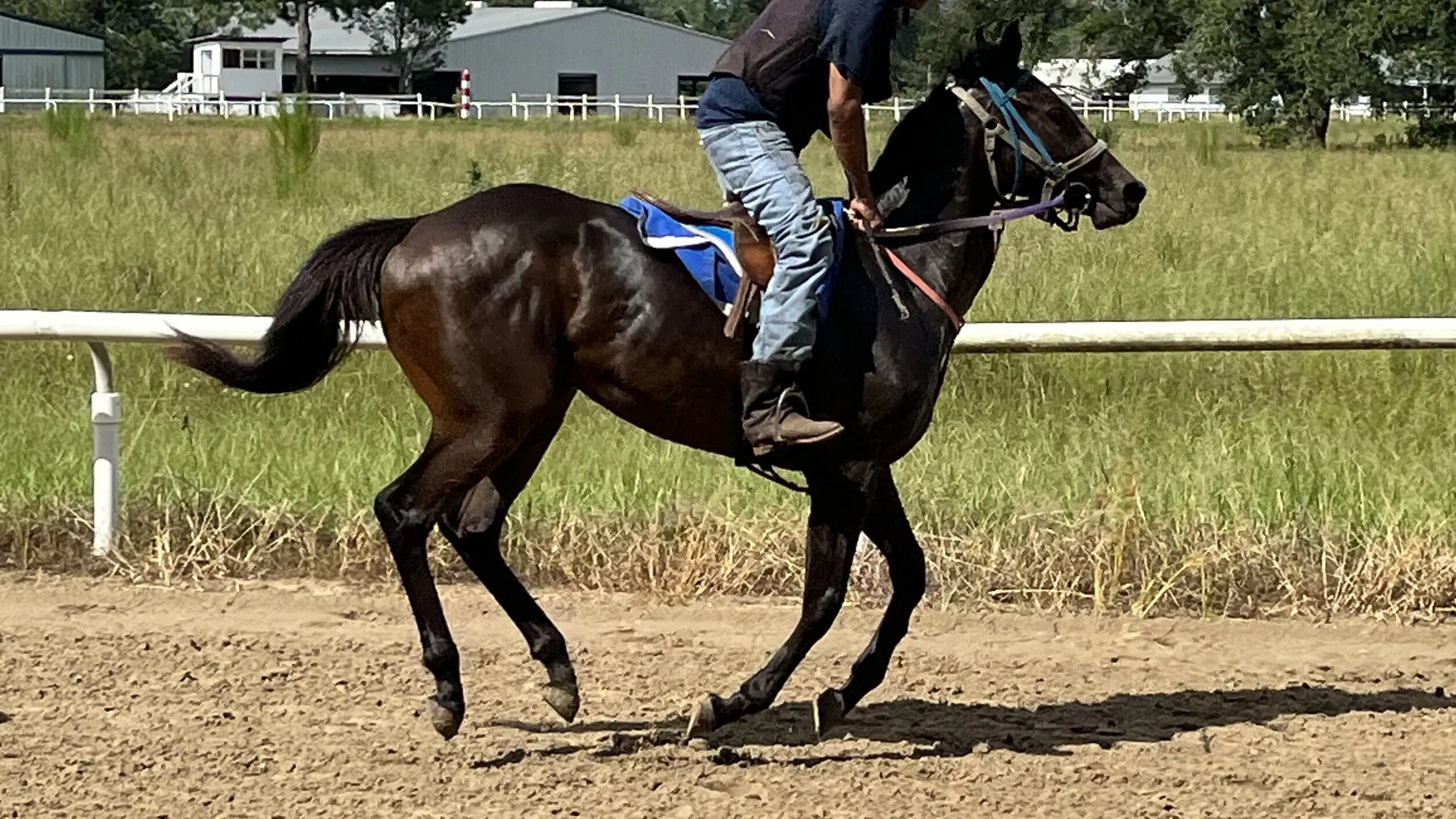
Behavioral Traits and Their Impact on Care and Training
Understanding and respecting the behavioral traits of Thoroughbreds are essential for anyone involved in their care. Their intelligence and eagerness to please make them quick learners, but their sensitivity means they thrive on consistency and clarity in training.
The spirited nature of Thoroughbreds demands an experienced hand, capable of channeling their energy into positive outcomes, whether on the racetrack, in the show ring, or as leisure companions. And I have found patience is key.
Strategies for Success with Thoroughbreds
Successfully managing Thoroughbred temperament involves more than just recognizing their characteristics; it requires tailored strategies that cater to their individual needs. Regular health check-ups, a balanced diet, and a structured exercise regimen are foundational.
Additionally, incorporating variety in training, ensuring mental stimulation, and fostering a calm, supportive environment can help mitigate stress and anxiety, allowing their spirited nature to shine in a positive light.
As we explore the role of Thoroughbreds in competitive sports, it becomes evident how their unique temperament traits contribute to their versatility and success.
The journey from understanding to effectively managing Thoroughbred temperament underscores the importance of patience, knowledge, and respect in unlocking their full potential.
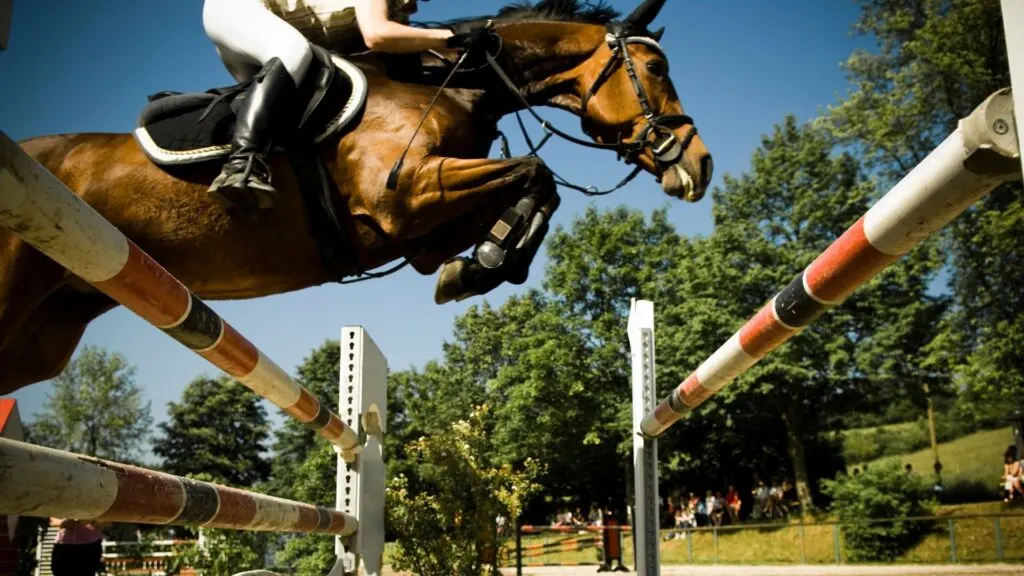
Beyond the Racetrack: Unveiling Thoroughbred Versatility
Thoroughbreds are synonymous with horse racing, yet their capabilities extend beyond the racetrack. This breed’s intelligence, agility, and sensitivity make them suitable for a diverse range of equestrian disciplines.
Thoroughbreds in Competitive Sports: Showcasing Athletic Prowess
In competitive sports, Thoroughbreds have demonstrated remarkable achievements that highlight their versatility. From the precision and grace of dressage to the demanding challenges of eventing and the agility required in show jumping, Thoroughbreds have excelled and left an indelible mark.
- Show Jumping: Thoroughbreds like Gem Twist have become legends, showcasing the breed’s agility and competitive spirit.
- Eventing: Horses such as Biko and Winsome Adante highlight the Thoroughbred’s stamina and versatility across the eventing discipline’s varied demands.
- Dressage: Though less common in high-level dressage, Thoroughbreds such as Keen have demonstrated the breed’s potential for grace and precision.
Noteworthy Thoroughbreds in Competitive Sports
- Gem Twist, a thoroughbred show jumper, is the only horse to have won the “American Grand Prix Association Horse of the Year” title three times and is regarded as one of the best show jumpers in history. Read more on Wikipedia.
Future of the Thoroughbred Breed: Expanding Horizons
Looking ahead, the versatility of Thoroughbreds presents exciting prospects for the breed’s future. As equestrian sports evolve and new disciplines emerge, Thoroughbreds’ adaptability may open new avenues for participation and achievement.
The potential for Thoroughbreds to engage in a wider array of equestrian disciplines, from therapeutic riding to emerging sports, underscores the breed’s capacity to adapt and excel in diverse environments.
This broadening of roles could redefine the breed’s presence in the equestrian world, ensuring Thoroughbreds continue to thrive and inspire across a broad spectrum of activities.
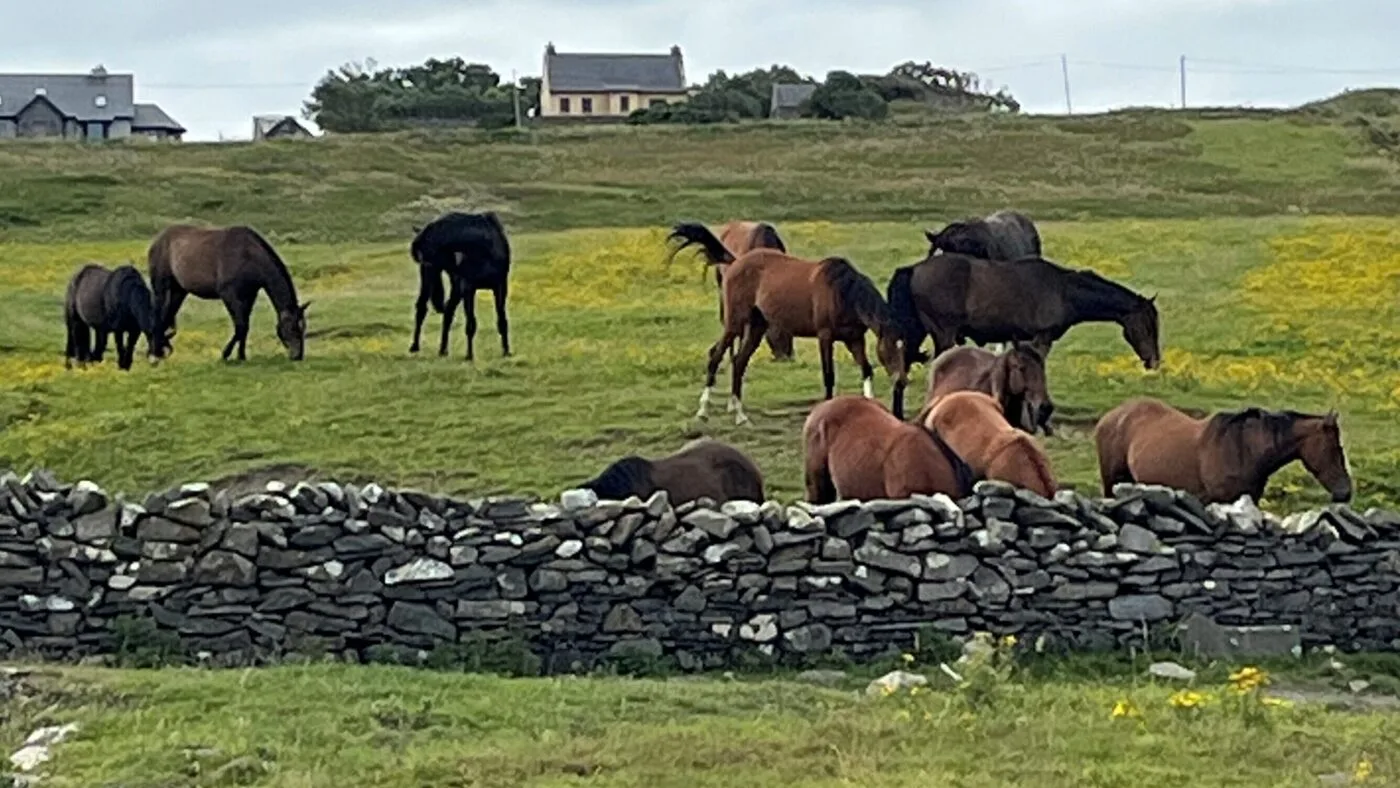
Comprehensive Care and Management of Thoroughbreds
Proper care and management are crucial for maintaining the health, performance, and longevity of Thoroughbreds. This comprehensive guide covers the essentials of their care needs, integrating general care practices with specific health-related aspects.
Diet and Nutrition:
- Balanced Diet: Essential for providing the energy and nutrients needed for their high metabolism, especially in racing.
- Hydration: Ensuring adequate water intake is vital, particularly for horses in training or racing.
- Special Dietary Considerations: Tailoring the diet to individual needs based on age, activity level, and health status.
Exercise and Training:
- Regular Physical Activity: Vital for their physical and mental well-being, with a structured training program balancing intensity and rest.
- Variety in Exercise: Important to prevent boredom and keep them engaged.
Health Management:
- Routine Veterinary Care: Regular check-ups, vaccinations, and deworming are crucial for early detection and prevention of health issues.
- Monitoring for Health Issues: Vigilance for common health challenges like gastric ulcers, respiratory problems, and musculoskeletal issues.
- Mental Health: Attention to their mental well-being, as Thoroughbreds can be prone to stress and anxiety.
Grooming and Daily Care:
- Regular Grooming: Essential for maintaining a healthy coat and identifying any injuries or issues.
- Hoof Care: Regular farrier visits are crucial, given their active lifestyle and the common issue of thin hoof walls and sensitive feet.
- Shelter and Comfort: Providing a clean, comfortable, and safe living environment.
Special Considerations for Retired Racehorses:
- Transitioning to Leisure Life: Adjusting their diet and exercise regimen as they move from racing to a more relaxed lifestyle.
- Re-training: Opportunities for retired racehorses to be re-trained for other disciplines or as pleasure horses.
Lifespan and Health:
- Lifespan: Thoroughbreds typically live for 25 to 28 years, with good care and genetics extending their lifespan into their 30s.
- Common Health Issues: Including musculoskeletal problems, gastric ulcers, respiratory issues, and hoof problems.
- Preventive Healthcare: Emphasizing the importance of regular veterinary check-ups and dental care for early detection and prevention of health issues.
Ensuring the proper care and management of Thoroughbreds demands a deep commitment to their unique needs, something I’ve learned through hands-on experience. Unlike hardier horse breeds, Thoroughbreds require vigilant attention, especially when health issues arise.
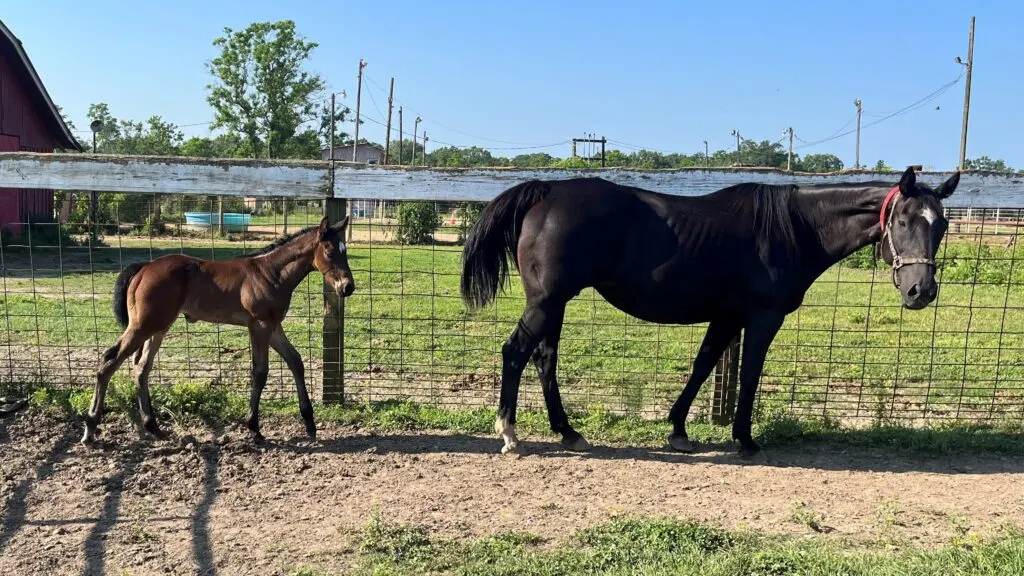
Breeding and Genetics of Thoroughbreds
Modern Thoroughbred breeding practices focus on refining the breed’s athletic capabilities and addressing genetic health concerns. Advances in genetic testing and research have provided breeders with tools to select for desirable traits such as speed, stamina, and resilience, while also managing the risks associated with inbreeding and genetic disorders.
Breeding Practices:
- Selective Breeding: The cornerstone of Thoroughbred breeding is selective mating, where horses with desirable traits are bred to enhance specific qualities like speed, stamina, and temperament.
- Pedigree Analysis: Breeding decisions often involve detailed analysis of pedigrees to maintain genetic diversity while enhancing desired traits.
- Live Cover Requirement: Thoroughbred breeding adheres to a ‘live cover’ rule, meaning artificial insemination is not permitted; this practice maintains the integrity of the breed’s lineage.
Genetic Traits:
- Speed and Endurance Genes: Thoroughbreds have been bred for genes that enhance racing performance, particularly those related to speed and endurance.
- Musculoskeletal Structure: Selective breeding has also focused on developing a musculoskeletal structure that supports their racing abilities.
- Health and Genetic Disorders: While breeding for performance, it’s also crucial to be aware of and manage genetic disorders that can affect Thoroughbreds, such as bleeding disorders and musculoskeletal vulnerabilities.
Impact of Selective Breeding:
- Evolution of the Breed: Over centuries, selective breeding has refined the Thoroughbred into a specialized racing breed with significant improvements in speed and agility.
- Influence on Other Horse Breeds: Thoroughbred genetics have influenced many other horse breeds, contributing to the development of sport horses and other racing breeds.
- Future Breeding Trends: As our understanding of equine genetics advances, future breeding practices may focus more on health and longevity alongside performance traits.
This exploration of modern breeding practices and genetic traits underscores the ongoing evolution of the Thoroughbred breed. By leveraging advancements in genetic science and maintaining a commitment to health and diversity, breeders are poised to enhance the breed’s performance and well-being for generations to come.
The foundation laid by the Darley Arabian, the Godolphin Arabian, and the Byerley Turk continues to influence the breed, but it is the forward-looking strategies that will define its future..
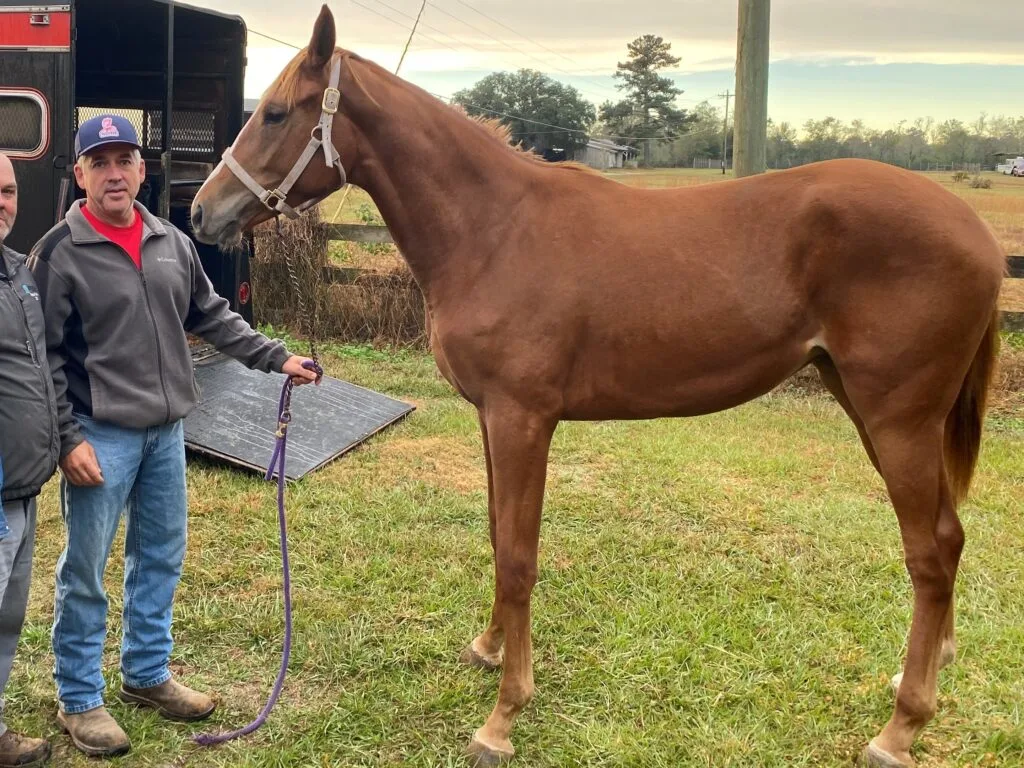
Thoroughbreds in Culture and Society
Thoroughbreds have played a significant role in various cultures and historical contexts, extending their influence beyond the racetrack into the realms of art, literature, and media. Let’s explore the cultural and societal impact of this majestic breed.
Historical Significance:
- Symbol of Nobility and Status: Historically, Thoroughbreds were symbols of nobility and status, often associated with royalty and the elite.
- Influence on Historical Events: Thoroughbreds have been part of significant historical events, including being ridden in battles and royal ceremonies.
- Thoroughbred horses like Secretariat, known for winning the Triple Crown, and Man o’ War, one of the greatest racehorses of all time, have become household names.
Thoroughbreds in Art and Literature:
- Equestrian Art: Thoroughbreds have been a popular subject in equestrian art, depicted in paintings, sculptures, and photography for their beauty and grace.
- Literary Presence: They have featured prominently in literature, from classic novels to contemporary stories, often symbolizing freedom, power, and the unbridled spirit.
Thoroughbreds in Media and Entertainment:
- Film and Television: Thoroughbreds have starred in numerous films and TV shows, capturing the hearts of audiences with their compelling stories and majestic presence.
- Advertising and Branding: The breed’s image is often used in advertising and branding, symbolizing speed, elegance, and excellence.
Cultural Celebrations and Events:
- Horse Racing Events: Thoroughbred racing events like the Kentucky Derby and Royal Ascot are not just sports events but cultural celebrations featuring fashion, social gatherings, and traditions.
- Influence on Equestrian Sports Worldwide: Thoroughbreds have influenced equestrian sports culture globally, with racing clubs and events in many countries.
Thoroughbreds and Social Impact:
- Therapeutic and Educational Roles: Beyond sports, Thoroughbreds play therapeutic and educational roles, participating in equine therapy and learning programs.
- Conservation and Preservation Efforts: Efforts to conserve and preserve Thoroughbred bloodlines have raised awareness about animal welfare and biodiversity.
The profound cultural and societal impact of Thoroughbreds underscores the deep bond between these magnificent animals and humans, a bond that continues to inspire and captivate.
Below is a helpful YouTube video that describes the characteristics of Thoroughbred horses.
Frequently Asked Questions about Thoroughbred Horses.
How fast can a Thoroughbred horse run?
On average, a Thoroughbred can run about 35 miles per hour. The world’s fastest Thoroughbred, Winning Brew, was recorded running at 43.97 miles per hour. More on Thoroughbred speed
What is the average size and weight of a Thoroughbred horse?
Thoroughbreds average around 16 hands (64 inches, or 163 cm) in height and typically weigh about 1,000 pounds (450 kg) at maturity. Average weight details
Do all Thoroughbreds share the same birthday?
Yes, every Thoroughbred celebrates its birthday on January 1, except for those born in the Southern Hemisphere, where their birthdays are recognized on August 1.
What is the average lifespan of a Thoroughbred horse?
Thoroughbreds typically live for 20 to 30 years, though some, like the retired racehorse Tango Duke, have lived much longer, up to 42 years.
What is the longest official Thoroughbred race?
The longest official Thoroughbred race is The Queen Alexandra Stakes in Great Britain, run annually in June, covering a distance of 2 miles, 5 furlongs, and 143 yards.
Can all Thoroughbreds trace their pedigree to specific stallions?
Yes, every Thoroughbred can trace its pedigree back to three foundational stallions: the Byerly Turk, the Darley Arabian, and the Godolphin Barb.
What is the origin of the term ‘Thoroughbred’?
The term ‘Thoroughbred’ dates back to 1796 and originally meant pure breed or stock, referring to any horse bred for racing. Over time, it has come to specifically denote a particular type of horse.

Conclusion: Celebrating the Thoroughbred Horse Breed
In exploring the Thoroughbred breed, we’ve journeyed through their rich history, remarkable physical attributes, distinctive temperament, and impressive versatility in various equestrian sports. From the racetrack to the show ring, Thoroughbreds have demonstrated their athletic prowess, adaptability, and enduring spirit.
We’ve delved into the challenges and misconceptions surrounding these magnificent horses, highlighting the importance of informed care and management. The future of Thoroughbreds, shaped by evolving trends in breeding and racing, looks promising, with potential for even greater versatility and impact in the equestrian world.
As we reflect on the multifaceted nature of Thoroughbreds, I invite you to share your experiences and thoughts. Whether you’re a seasoned Thoroughbred enthusiast, a professional in the equestrian field, or simply an admirer of these majestic animals, your perspectives and stories enrich our collective understanding and appreciation of this extraordinary breed.
As we close this chapter on our exploration of Thoroughbreds, we invite you to join the conversation and share your own stories, further enriching our collective appreciation of this extraordinary breed.
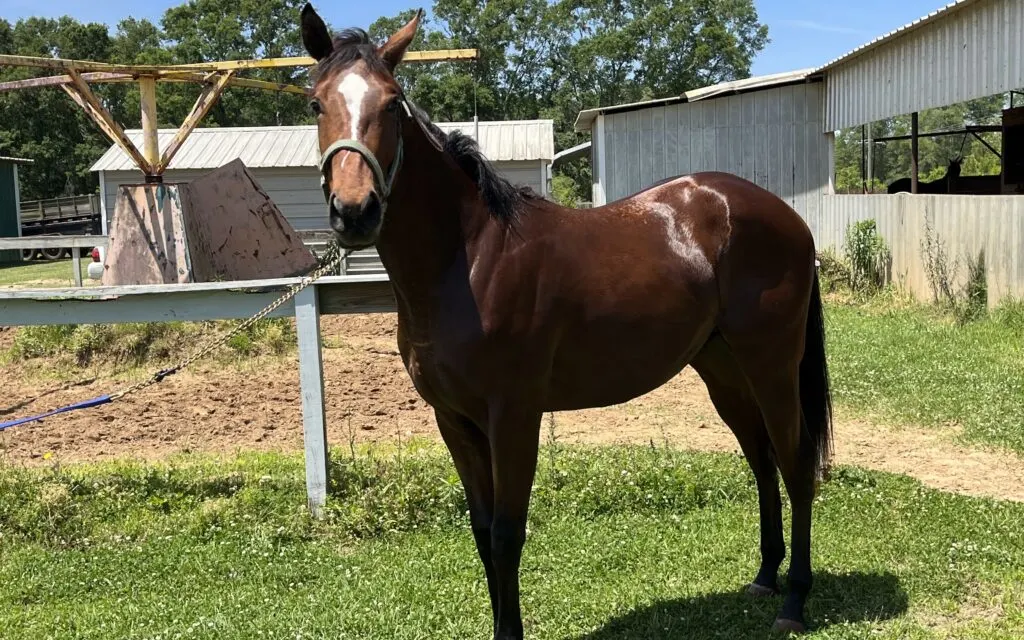
Get Involved: Share Your Thoughts and Experiences
We love to hear from our readers and Thoroughbred enthusiasts! Share your insights and experiences with Thoroughbred horses to enrich our community and help others learn more about this amazing breed. Your stories and perspectives are invaluable.
Additional Resources
Online Resources:
- The Jockey Club: The principal governing body for Thoroughbred breeding and racing in the United States. Visit Website
- British Horseracing Authority: Provides extensive resources on Thoroughbred racing in the UK. Visit Website
Research Papers and Articles:
- “Inbreeding depression and the probability of racing in the Thoroughbred horse”: A study examining the genetic makeup of contemporary Thoroughbreds. Read Study
Thoroughbred Associations:
- Thoroughbred Owners and Breeders Association (TOBA): Offers resources and support for Thoroughbred owners and breeders. Visit Website
- National Thoroughbred Racing Association (NTRA): Promotes Thoroughbred racing and breeding. Visit Website
Reader Poll:
We’re curious to know what aspect of the Thoroughbred breed appeals to you the most. Participate in our poll and see what others think, too!
Your participation helps us understand what our readers value most about Thoroughbreds and guides us in creating content that resonates with your interests.
Meet Miles Henry
An avid equestrian and seasoned racehorse owner, Miles Henry brings his extensive experience to the equine world, proudly associating with the AQHA, The Jockey Club, and various other equine organizations. Beyond the racetrack, Miles is an accomplished author, having published various books about horses, and is a recognized authority in the field, with his work cited in multiple publications.
🔗 Connect with Miles:
Twitter
Facebook
YouTube: Check out race highlights, horse care tips, and more!

